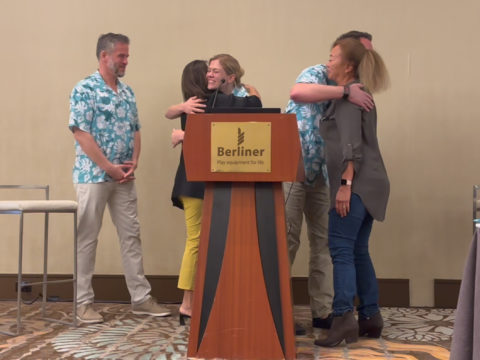
March 7, 2024
Donation – WaggaWagga for School in Hawaii
When we learned of the devastating fires in Lahaina, Hawaii in August 2023, we were deeply saddened. Due to our…
1. December 2021
In 2007, construction work began on the “Waldwipfelweg” project, a forest treetop path, in the Bavarian town of Sankt Englmar, near the Czech border. Martin Six, the operator of the Lower Bavarian family attraction, had originally inherited the area and was thinking of what he could do with the farmland. He soon came up with the idea of developing the close-to-nature and tree-rich surroundings into a Forest Treetop Path, which celebrated its opening in 2008. “Due to its south-facing slope, the property is ideally suited for such an idea,” says Martin Six. “With good visibility, you even have an unobstructed view of the montain Zugspitze, which is about 220 kilometres away as the crow flies.”

The path leads visitors at a height of 30 metres about 600 metres above and through the treetops and offers a great view of the Bavarian Forest and its surrounding landscapes. On the approx. 2-kilometre-long nature discovery trail leading through the forest, families can experience nature in a new way at various interactive stations and learn interesting facts about their surroundings and perception. You can also see alpacas, llamas, black-nosed sheep and kangaroos on the grounds of the Forest Treetop Path, which is especially fun for the little ones.

In 2014, Martin Six came up with the idea for a forest tower. The location for the 52-metre-high tower was moved a total of four times during the planning process. Contrary to the initial idea of building a tower with a lift and rotating restaurant, this was ultimately replaced by a tower with a barrier-free spiral walkway (width 2.5 metres, maximum gradient 6 %) and was to have the shape of a spherical tree. This resulted in a tower whose “trunk” is represented by a huge concrete mast. The steel construction comprises almost 300 tonnes of steel and 140 m³ of larch wood. The viewing platform is reached via a 400-metre-long wooden path that winds around the mast like a kind of spiral staircase. In the course of planning, Six decided to make the tower more attractive for children and to integrate a playground of a special kind.


For the wish of an alternative ascent, Six teamed up with the Berliner Seilfabrik. Various play elements such as tunnels and bridges playfully connect six levels and thus approx. 23 metres in height up to the viewing platform. Elimar Quednau, project constructor at Berliner, recalls: “The first designs of the tower were fixed and so we designed five net elements in close coordination with the steel constructor to take the climbers from level to level.” From the start of the “treetop”, a vertical net ascent with staggered HDPE panels leads to the second level and thus to the first of two intermediate platforms. An inclined net ascent takes the visitors from there to an arched ascent with inner offset nets, which leads along the outside of the tower at a height of about 40 metres.

Once you have crossed the arch, you land on the second intermediate level.This is where one of the highlights of the forest tower is located: the ten-metre-high DNA Tower with a three-dimensional climbing net that almost sticks out of the tower with its posts. Quednau revealed: “The idea of placing a DNA Tower in the tower came at a somewhat later stage of the planning. Here, as with the other play elements, close planning cooperation with the tower constructors was necessary. To make the installation of the DNA Tower possible, additional static calculations had to be undertaken and more steel beams had to be installed below the second intermediate platform.”


You can balance across the forest tower on a jungle rope in an 11.5-metre-long net tunnel at a height of 6 metres. A second arched ascent bridges the way between the last two levels and this time leads up to the viewing platform at a height of about 7 metres inside the tower. There, another special feature of the tower awaits the visitors.

Two close-meshed nets found at the far edge of the platform offer those who dare to step on the net a view 52 metres into the depths. All rope crossing points of the planar nets as well as the tunnels of the Berliner Seilfabrik are grouted with aluminium Ballknots. An international patent has been granted for a new version. The pressing of each individual Ballknot is a precise multi-stage process that guarantees a secure fixing of the crossing position as well as a very high strength against slippage. In addition, this process withstands any temperature and is safe against vandalism attempts. It is therefore very safe to walk on the two 6 by 3 metre nets, although in view of the height, some people may lose sight of this fact. This was also the case for the Managing Owner of Berliner David Köhler during his visit to the forest tower: “Although I know that our nets are designed for several tonnes of user load, the step onto the net was a real challenge. In retrospect, I am glad that I dared to do it after all. The dizzying height and the view were a great experience.”